What Is GitFlow?
GitFlow is a branching model for Git, created by Vincent Driessen. It has attracted a lot of attention because it is very well suited to collaboration and scaling the development team.
Key Benefits
Parallel Development
One of the great things about GitFlow is that it makes parallel development very easy, by isolating new development from finished work. New development (such as features and non-emergency bug fixes) is done in feature branches, and is only merged back into main body of code when the developer(s) is happy that the code is ready for release.
Although interruptions are a BadThing(tm), if you are asked to switch from one task to another, all you need to do is commit your changes and then create a new feature branch for your new task. When that task is done, just checkout your original feature branch and you can continue where you left off.
Collaboration
Feature branches also make it easier for two or more developers to collaborate on the same feature, because each feature branch is a sandbox where the only changes are the changes necessary to get the new feature working. That makes it very easy to see and follow what each collaborator is doing.
Release Staging Area
As new development is completed, it gets merged back into the develop branch, which is a staging area for all completed features that haven’t yet been released. So when the next release is branched off of develop, it will automatically contain all of the new stuff that has been finished.
Support For Emergency Fixes
GitFlow supports hotfix branches - branches made from a tagged release. You can use these to make an emergency change, safe in the knowledge that the hotfix will only contain your emergency fix. There’s no risk that you’ll accidentally merge in new development at the same time.
How It Works
New development (new features, non-emergency bug fixes) are built in feature branches:
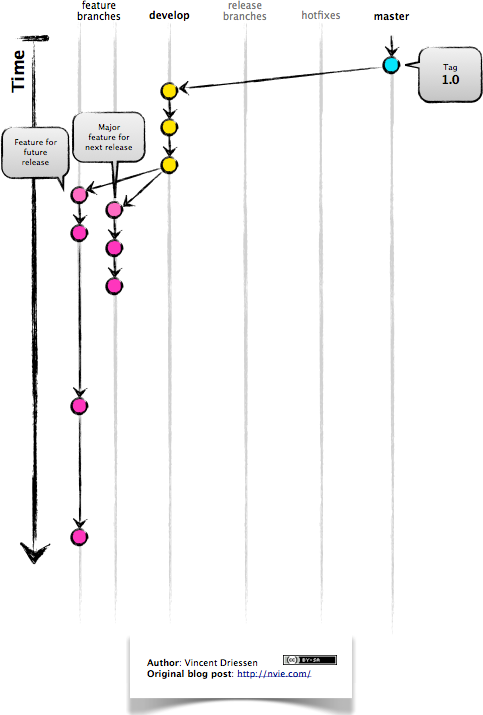
Feature branches are branched off of the develop branch, and finished features and fixes are merged back into the develop branch when they’re ready for release:
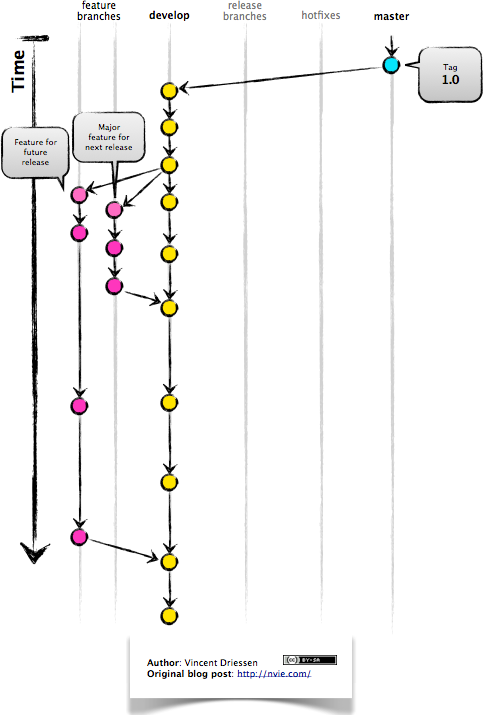
When it is time to make a release, a release branch is created off of develop:
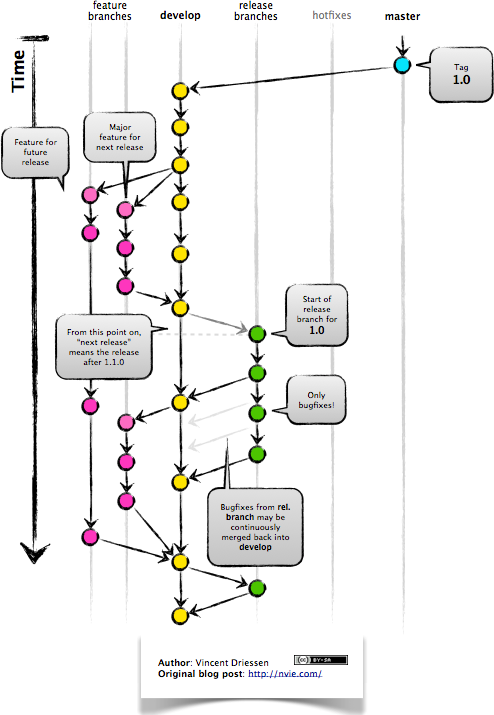
The code in the release branch is deployed onto a suitable test environment, tested, and any problems are fixed directly in the release branch. This deploy -> test -> fix -> redeploy -> retest cycle continues until you’re happy that the release is good enough to release to customers.
When the release is finished, the release branch is merged into master and into develop too, to make sure that any changes made in the release branch aren’t accidentally lost by new development.
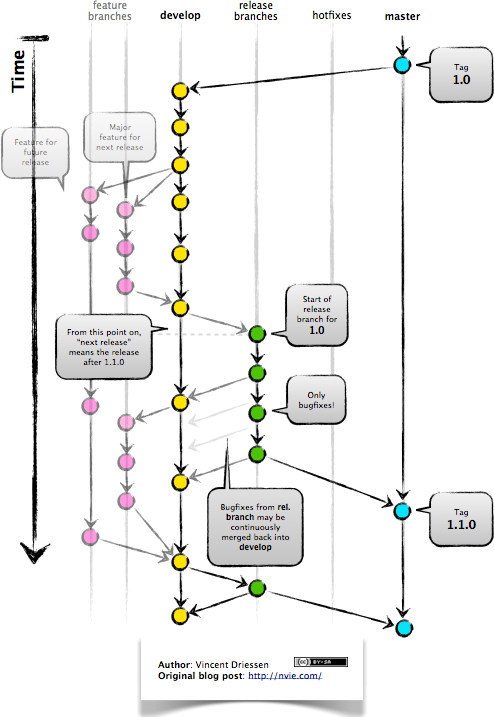
The master branch tracks released code only. The only commits to master are merges from release branches and hotfix branches.
Hotfix branches are used to create emergency fixes:
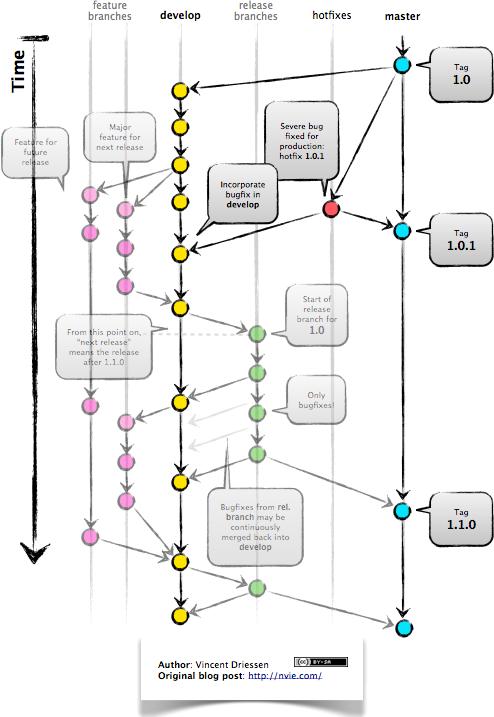
They are branched directly from a tagged release in the master branch, and when finished are merged back into both master and develop to make sure that the hotfix isn’t accidentally lost when the next regular release occurs.







 GitFlow是一种由Vincent Driessen创建的Git分支模型,它因适合团队协作和项目扩展而受到关注。此模型通过隔离新开发与已完成工作,使并行开发变得容易。它还支持紧急修复,确保不会意外地将新开发与紧急修复合并。
GitFlow是一种由Vincent Driessen创建的Git分支模型,它因适合团队协作和项目扩展而受到关注。此模型通过隔离新开发与已完成工作,使并行开发变得容易。它还支持紧急修复,确保不会意外地将新开发与紧急修复合并。
















 1013
1013

 被折叠的 条评论
为什么被折叠?
被折叠的 条评论
为什么被折叠?








